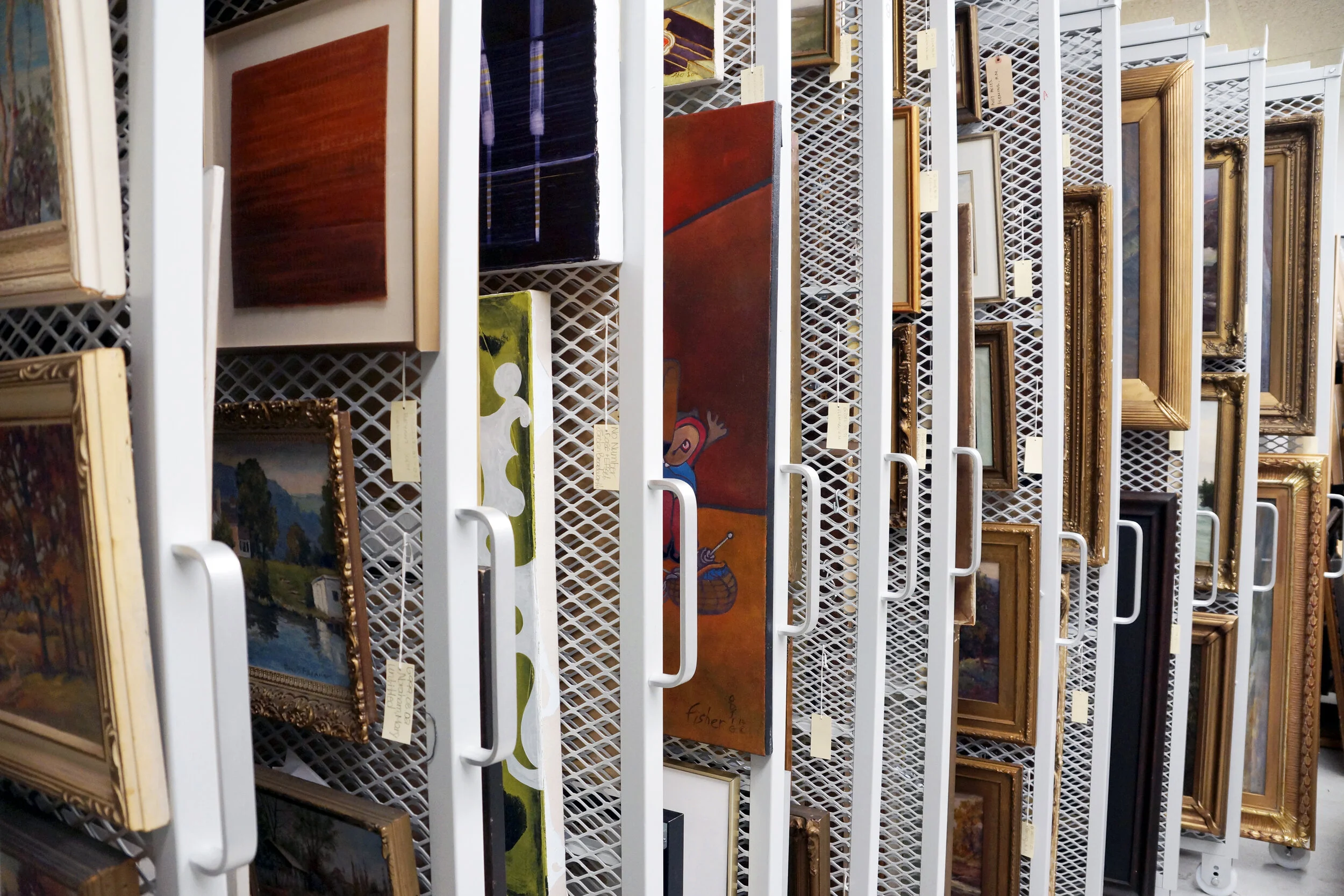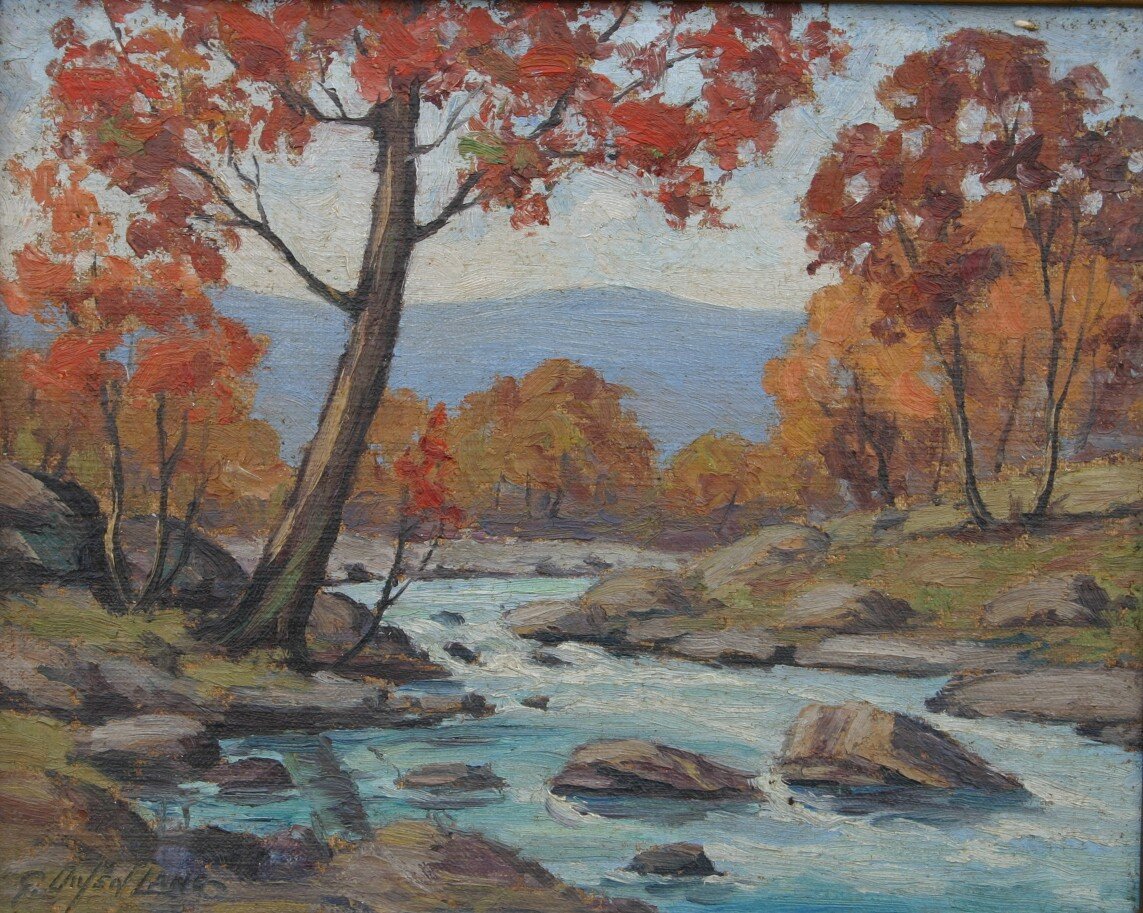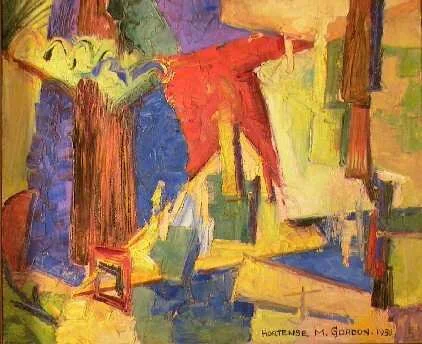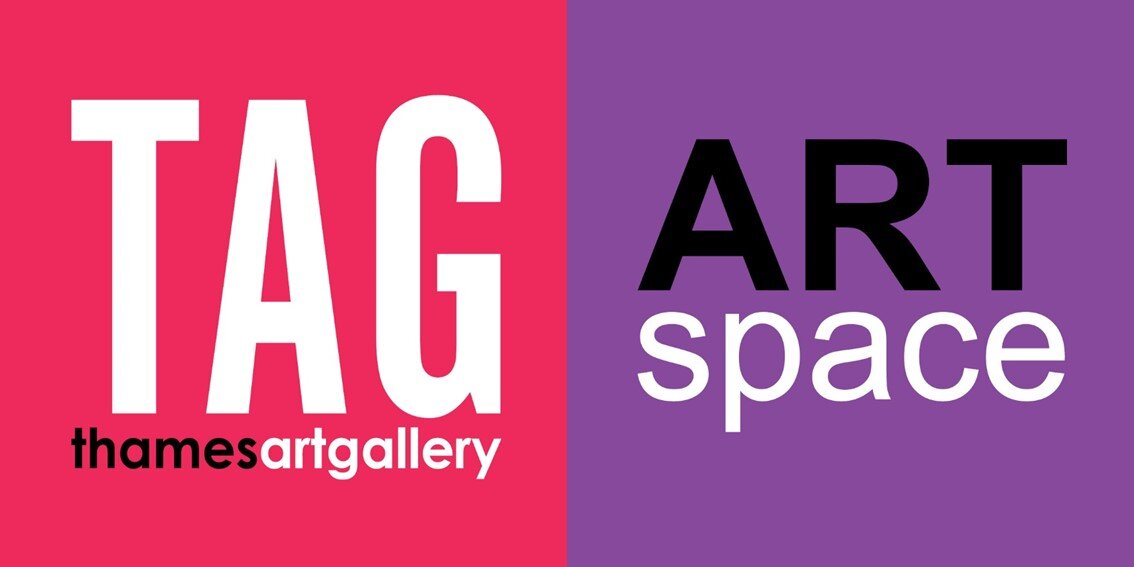



About the Collection
The Thames Art Gallery’s Permanent Collection is a documentation of the Municipality of Chatham-Kent’s art history from the late 1800’s to the present and is unique and specific to the community. An active commitment to the development of the collection was established in 1996-97. At that time, the collection housed approximately 800 works, mostly historical, local artists and a number of Hortense Gordon paintings and drawings that had been donated to the Gallery from a Gordon relative (the artist lived in the Chatham area in the early 1900’s). In 1997, an area in the Chatham Cultural Centre was designated and renovated to accommodate the acquisition and storage of art works. It now contains over 700 artworks and is used as source material for exhibitions that reflect the regional history, and the diversity of contemporary Canadian art practices.
Includes:
Alexander M. Fleming (1875-1929) - over 50 works by Alexander M. Fleming. The Gallery has been very active in collecting Fleming paintings and without this effort, his artwork would be lost to the citizens of this community.
George Wolfe - made major contributions to the advancement of the arts in Chatham-Kent. His "Kent County" landscapes present a shared geographical place and establish an identity that is unique to this area of rural Southwestern Ontario.
Hortense Gordon (1887-1961) - Showed great talent early, exhibiting with the Ontario Society of Artists while still in her teens. She was a trailblazer in the popularization of modern art in Canada.
Hortense Gordon, Sketchbooks - Features eleven Hortense (Mattice) Gordon sketchbooks, ranging from the early 1900s to 1960
Alexander M Fleming
Included in the Thames Art Gallery’s Permanent Collection are over 50 works by Alexander M. Fleming. The Gallery has been very active in collecting Fleming paintings and without this effort his artwork would be lost to the citizens of this community.
Alexander M. Fleming (1875 - 1929) was the most significant artist to emerge from the Chatham area. He began creating in the years before the rise of the Group of Seven and was influenced early in his career by the Barbizon school, later the scientific colour theories of the French Impressionists, and towards the end of his career, by the Group of Seven. He was elected a member of the Ontario Society of Artists and had work accepted into prestigious Royal Canadian Academy exhibitions.
George Wolfe
George Wolfe made major contributions to the advancement of the arts in Chatham-Kent. His "Kent County" landscapes present a shared geographical place and establish an identity that is unique to this area of rural Southwestern Ontario.
Until 2001, up a narrow flight of stairs, in a historic downtown building at 119½ King Street West, were the remains of a business closed for over 40 years - Wolfe Studios. Still, scattered on the floor neatly in little boxes were thousands of photographs in small brown envelopes. Most labelled with names and addresses written in pencil. A few stacks of larger portraits lay on the counter, very striking, one in particular of Artis (Shreve) Lane. In a corner of a tiny dark room was a stack of paintings left by the Studio Ten painters who had rented the space in the early 60s, after Wolfe retired. The front of the store, overlooking King Street, was used to sell art supplies and frames, and as a space where Wolfe exhibited his paintings. At the back of the building, in the photography room, all that remained was a small bench and the diamond shaped leaded glass windows that looked out over the river. It was not difficult, to imagine the days when people in Chatham would climb the stairs to enter George Wolfe's world.
George Wolfe moved to Chatham in the early 1900s and for the next 50 years worked in the photography business. He photographed weddings, birthdays, young men in uniform going off to war - he documented thousands of people from Chatham-Kent.
Photography played a significant role in the development of Wolfe’s painting style. It dictated formal aspects of composition and the importance of realistic portrayal. While photography was his job, painting was his true love.
A friendship with Alexander Fleming must have influenced Wolfe towards painting, but Wolfe did not begin to paint until after Fleming's death in 1929. A number of Wolfe’s early paintings, especially of seascapes and thatched roof cottages remind us of Fleming’s work. Wolfe, in later years, revisited and painted scenes from Belfountain and the Credit River. These areas he had accompanied Fleming in the 1920s. A few of Wolfe’s early canvases are signed “Geo. Wolfe after AM Fleming,” showing that Wolfe was studying and possibly copying Fleming paintings as he learned his craft.
Wolfe was a central figure in the Chatham visual arts community. He was a member and president of the Chatham-Kent Artists Association, a group that organized and presented art exhibitions in Kent County in the 1940s, 50s, and 60s. In the spring, summer, and fall, Wolfe arranged painting excursions on Thursday afternoons. Picture George Wolfe, with fellow artists and friends Mary Abraham, Gordon Lang, Eleanor Smith, and Adele Read, packing their paints and sketchpads into a '43 Plymouth. Driven by Floss Wolfe the group travelled out and documented the far corners of the county. In the winter months, the back room of Wolfe's business was used as a studio for their Thursday get-togethers. The group would have live models to draw and would exchange ideas and techniques.
Visit an established home in Chatham today and the odds are good that you will find a George Wolfe painting on the wall. Many with stories that date back to the 1930s, 40s, and 50s; paintings of landmarks like McGeachy Pond, Wilson's Bush, or McGregor's Creek; paintings that hold special memories of days past, handed down from one generation to the next.
Hortense Gordon
Hortense Gordon (1887 - 1961) showed great talent early, exhibiting with the Ontario Society of Artists while still in her teens. In 1916 she began work at the Hamilton Technical School as an assistant to John Gordon whom she married in 1920. She continued teaching at the HTS until 1951, the last twenty years as head of the Art Department, succeeding her husband. In the 1930’s she began experimenting with abstract painting, becoming one of the first abstract artists in Hamilton and probably in Canada. She was a member of the Canadian Society of Graphic Artists, the Royal Canadian Academy of Art and Painters Eleven. Julius LeBow, a local art gallery owner said of Hortense Gordon. “Totally involved with all aspects of art in Hamilton, she profoundly affected everyone who came into contact with her.” She was a trail blazer of the popularization of modern art in Canada.
Hortense Gordon, Sketchbooks
September 15 - October 22, 2006
Hortense Gordon: Sketchbooks features eleven Hortense (Mattice) Gordon sketchbooks. Intact sketchbooks, ranging from the early 1900s to 1960 will be displayed by means of a single open page. The exhibition will be enhanced by an interactive computer program that will allow users to scroll through images of every page in the sketchbooks. Some of the books contain finished, self conscious studies that are signed by the artist, while others include rapidly scribbled and nearly illegible sketches. Outside of an artist’s possession, intact sketchbooks are rare.
The Gordon sketchbooks are not normally loaned or made available for study due to their fragility. Hortense Gordon: Sketchbooks will provide gallery visitors the opportunity to see a selection of these unique works that are not often put on view. To allow further accessibility to these rare sketches, the Thames Art Gallery has digitally scanned each sketch and organized the digital files on a computer viewing station. This will allow gallery visitors to leaf through each sketchbook in virtual time, without exposing the fragile originals to damage.




